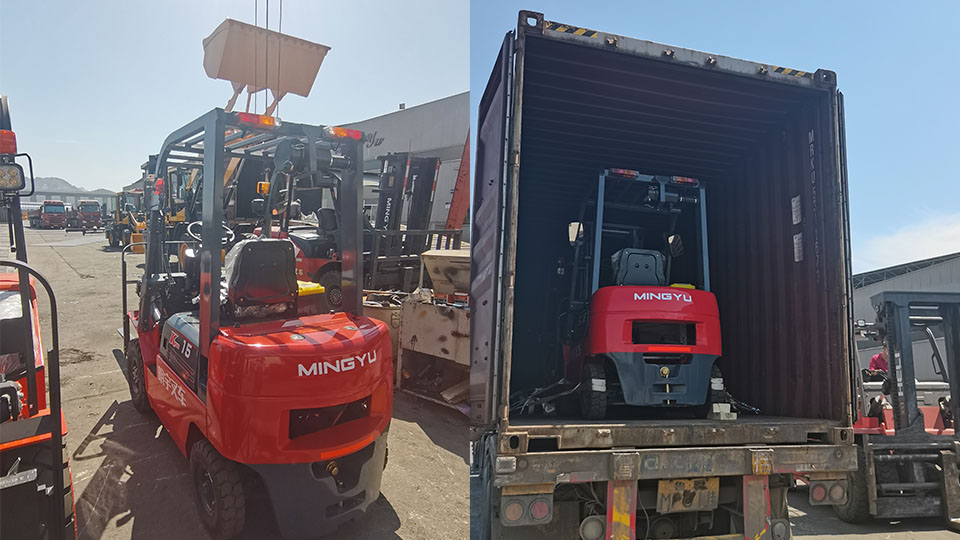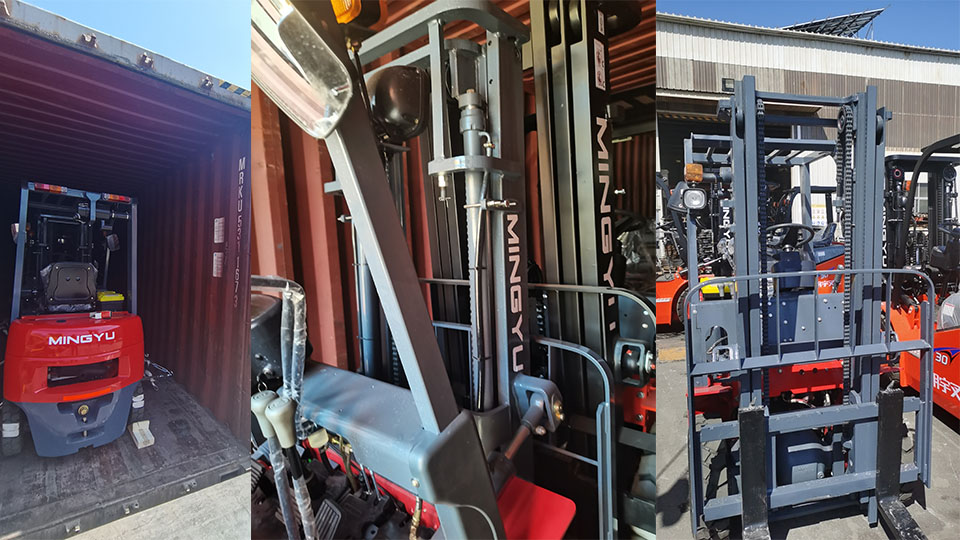
I. Introduction
Forklifts are indispensable tools in material handling, known for their ability to lift and transport heavy loads efficiently. While it's widely understood that loaded forklifts can be unstable, there's a common misconception that unloaded forklifts are inherently safe. However, numerous accidents occur with unloaded forklifts, highlighting their potential for instability. This article aims to explore the various factors that contribute to the instability of unloaded forklifts, providing insights into how these machines can become hazardous even without a load.
II. Understanding Forklift Stability Principles
The Stability Triangle:
The stability triangle is formed by the three points of contact between the forklift's wheels and the ground.
Maintaining the center of gravity (COG) within this triangle is crucial for stability.
Any shift of the COG outside the triangle can lead to tipping.
Center of Gravity (COG):
The COG is the point where the weight of the forklift is evenly distributed.
An unloaded forklift has a relatively high COG, which can shift easily with movement.
Understanding how the COG shifts is essential for safe operation.
Moment and Leverage:
Moment is the turning effect of a force around a point.
Leverage amplifies the effect of a force, making even small shifts in weight significant.
These principles explain how even minor movements can destabilize an unloaded forklift.
III. Factors Contributing to Unloaded Forklift Instability
High Center of Gravity:
Unloaded forklifts have a high COG due to the heavy mast and carriage at the front.
This high COG makes the forklift more susceptible to tipping, especially during turns.
The higher the COG, the less stable the forklift becomes.

Light Rear Axle:
The rear axle of an unloaded forklift is relatively light, reducing traction and stability.
This light rear axle makes turning and braking more challenging.
Reduced traction can lead to skidding and loss of control.
Mast and Carriage Weight:
The weight of the mast and carriage contributes significantly to the forklift's overall COG.
Even without a load, these components can cause instability, especially when raised or tilted.
The weight distribution can cause the forklift to be front heavy.
Tire Conditions and Pressure:
Worn or uneven tires reduce traction and stability.
Incorrect tire pressure can affect the stability triangle and increase the risk of tipping.
Maintaining proper tire conditions is crucial for safe operation.
Surface Conditions:
Uneven or slippery surfaces can cause the forklift to shift or slide.
Inclines and declines alter the COG and increase the risk of tipping.
Operating on unstable surfaces requires extra caution.
IV. Operator Actions and Their Impact
Excessive Speed:
High speed increases the risk of tipping, especially during turns.
Sudden stops and starts can cause the forklift to sway or tip.
Speed control is essential for maintaining stability.
Sharp Turns:
Sharp turns can shift the COG outside the stability triangle, leading to tipping.
Turning on uneven surfaces increases the risk of instability.
Wide, gradual turns are safer.
Improper Braking:
Sudden or hard braking can cause the forklift to sway or tip.
Improper braking can lead to loss of control, especially on slippery surfaces.
Smooth, controlled braking is crucial.
Mast Positioning:
Raising or tilting the mast shifts the COG, affecting stability.
Operating with the mast raised or tilted requires extra caution.
Keeping the mast low and vertical when traveling is safer.
V. Environmental Factors
Wind Conditions:
Strong winds can push the forklift off balance, especially when unloaded.
Wind can create a moment that shifts the COG outside the stability triangle.
Operating in windy conditions requires extra caution.
Inclines and Declines:
Operating on slopes increases the risk of tipping.
The angle of the slope affects stability, with steeper slopes being more hazardous.
Understanding the slope's impact is essential.

Slippery Surfaces:
Reduced traction on wet or oily surfaces increases the risk of skidding and tipping.
Slippery surfaces can cause the forklift to slide, shifting the COG.
Extra caution is needed on slippery surfaces.
VI. Equipment Design and Maintenance
Forklift Design Considerations:
Wheelbase and track width affect stability, with wider and longer designs being more stable.
Mast design and weight distribution influence the COG.
Design features can enhance or reduce stability.
Maintenance Issues:
Worn or damaged components can affect stability.
Regular maintenance and inspections are crucial for identifying and addressing issues.
Proper maintenance ensures optimal performance.
Modifications and Aftermarket Additions:
Unauthorized modifications can alter the COG and reduce stability.
Non-standard attachments can create unforeseen hazards.
Only authorized modifications should be made.
VII. Safety Measures and Best Practices
Operator Training:
Proper training on stability principles is essential for safe operation.
Operators should be trained on how to handle unloaded forklifts.
Training should cover speed control, turning techniques, and braking.
Speed Control:
Maintaining safe speeds, especially during turns, is crucial.
Speed governors or limiters can help prevent excessive speed.
Operators should be aware of speed limits.
Turning Techniques:
Wide, gradual turns are safer than sharp turns.
Operators should avoid sudden movements and sharp turns on uneven surfaces.
Planning turns ahead of time is important.
Surface Inspection:
Inspecting work surfaces for hazards is essential.
Taking precautions on uneven or slippery surfaces is crucial.
Operators should be aware of surface conditions.
VIII. Case Studies and Real-World Examples
Analysis of common accidents involving unloaded forklifts:
Case studies highlight how specific factors contribute to instability.
Examples show the consequences of improper operation.
Lessons learned from these incidents:
Understanding the causes of accidents helps prevent future occurrences.
Real-world examples reinforce the importance of safety measures.
IX. Technological Advancements in Forklift Stability
Stability Control Systems:
Electronic stability control systems enhance safety by preventing tipping.
These systems use sensors to detect instability and take corrective action.
They improve overall forklift safety.
Sensors and Monitoring:
Sensors detect instability and alert operators to potential hazards.
Real-time monitoring of forklift stability provides valuable data.
Monitoring systems help prevent accidents.
Automated Systems:
Automated forklifts can improve stability through precise control.
Automation reduces the risk of human error.
Automated systems enhance safety and efficiency.
X. Conclusion
Unloaded forklifts can be unstable due to a high center of gravity, light rear axle, and other factors. Operator actions, environmental conditions, and equipment maintenance play significant roles in stability. Proper training, speed control, turning techniques, and surface inspection are essential for safe operation. Technological advancements, such as stability control systems and sensors, enhance safety. Understanding these factors and implementing best practices will help prevent accidents and ensure the safe operation of unloaded forklifts.
Name: selena
Mobile:+86-13176910558
Tel:+86-0535-2090977
Whatsapp:8613181602336
Email:vip@mingyuforklift.com
Add:Xiaqiu Town, Laizhou, Yantai City, Shandong Province, China